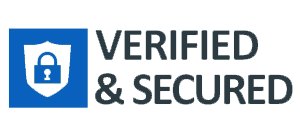In an economic milieu where interest rates soar beyond 9%, small businesses are compelled to apply the brakes with alacrity. These entrepreneurial ventures, once bustling with activity, now find themselves in a more contemplative state, postponing equipment acquisitions and intensifying their endeavors to amass receivables, all in an effort to navigate the treacherous waters of escalated borrowing costs.
The landscape has shifted dramatically from just a couple of years prior, with borrowing expenses ballooning to twice their former levels. This stark increase signals a broader economic cooldown, as higher interest rates cast a chill over business activities. Entrepreneurs, previously keen on expansion and equipment investments, now find themselves reevaluating their strategies. Hiring plans are put on hold, loan terms are scrutinized with greater caution, and a newfound emphasis on punctual payment collection emerges.
Amidst these challenges, small business owners must also grapple with labor scarcities, inflationary pressures, and an overarching sense of economic unpredictability. The fiscal tightrope they walk becomes ever more precarious.
Data from the National Federation of Independent Business paints a stark picture: the average interest rate paid by small businesses on short-term loans has remained at or above 9% for the past three months. This is a significant leap from the 6.7% observed a year earlier and even more so from the 4.6% in August 2021. Despite the Federal Reserve’s recent decision to maintain rates at a 22-year zenith, the slight deceleration in inflation observed in October hints at a potential cessation of further increases.
The repercussions of these heightened rates ripple through various economic sectors. The housing market sees a downturn in sales as prospective buyers and sellers retreat, businesses curtail their investments, and the overall hiring pace slackens.
Consider the case of Tom Rauen, the proprietor of 1-800-Tshirts. Faced with these daunting financial conditions, Rauen has delayed acquiring a $50,000 digital printing machine for his Dubuque, Iowa-based enterprise. This machine, a vital cog in the machinery of his 35-person screen printing, embroidery, and promotional products business, promised to internalize production, enhancing flexibility and reducing turnaround times. Yet, Rauen harbors concerns about the company’s ability to service loan payments during the traditionally lean sales months of January and February. His decision to postpone the purchase until spring, while accumulating sufficient cash reserves, underscores the cautious approach necessitated by the current fiscal environment.
These financing strains coincide with the cessation of government aid programs that previously buoyed entrepreneurs through the Covid-19 pandemic. The result is a marked increase in small-business bankruptcy filings, the most significant since the pandemic’s onset.
As Mark Zandi, chief economist at Moody’s Analytics, observes, small businesses are generally in a stronger financial position than in previous periods of sharp interest rate hikes. Nonetheless, their financial fragility remains a concern.
A recent survey conducted for The Wall Street Journal reveals the extent of this impact: over half of small-business owners report that higher interest rates have affected their operations. Nineteen percent anticipate future impacts. Additionally, a Vistage Worldwide survey finds that more than 20% of entrepreneurs acknowledge the influence of these rates and tighter lending standards on their hiring decisions.
Small businesses, often operating on slimmer profit margins and with smaller cash reserves than their larger counterparts, are particularly vulnerable to the Federal Reserve’s inflation-curbing measures. According to Goldman Sachs, small businesses allocated approximately 6% of their revenue to interest payments in 2021, pre-rate hike, compared to just 2% for larger firms. This discrepancy reflects not only higher rates on small-business debt but also a greater debt-to-output ratio.
The narrative of Eagle Metalcraft, a precision sheet metal and machining company, further illustrates the challenges faced. The company’s order for an automated fiber optic laser cutter last December, a $700,000 investment, was met with delivery delays, causing two financing agreements to lapse. The consequent increase in financing costs, estimated at an additional $2,000 per month, forced Michael Bower, the president of the East Syracuse, N.Y., company, to abandon plans to expand his workforce. Inflation and a decline in sales compound these financial pressures.
Entrepreneurs like Kristen Bailey of Sweets & Meats BBQ in Cincinnati are adopting short-term solutions in lieu of expansion. Hindered by high interest rates and escalating property values, Bailey’s efforts to secure a building for her food truck and catering commissary business have been stymied. The 21-person company now incurs additional expenses for storage pods and makeshift solutions like using food trucks as overflow kitchens and renting trucks for catering tasks.
The broader trend is evident in the data: the dollar value of new small-business loans fell by 16.8% in the second quarter compared to the same period a year earlier, as reported by the Federal Reserve Bank of Kansas City. This decline reflects not only the impact of rising rates but also a weakening in loan demand and stricter lending criteria.
A notable example is Troop Industrial, a Groves, Texas-based supplier to the construction and petrochemical industries. Plans for expanding its inventory and building a new warehouse have been shelved due to prohibitive borrowing costs. Brian Swindel, the company’s president, expresses a reluctance to even consider a promising expansion property in the face of current interest rates.
Simultaneously, many entrepreneurs are refocusing their efforts on managing interest expenses and cash flow. USA Dutch, a precision sheet metal fabricator, chose a seven-year loan term over a ten-year one for a $1.1 million punch-laser cutting machine purchase. This decision, as owner Ronald Keizer explains, will save the Graham, N.C., company $155,000 in interest costs.
Becker Aviation, a distributor of aviation fueling equipment and accessories, exemplifies another adaptive strategy. Confronted with an interest rate on its line of credit that has surged to 9.75% from 4.5% in February 2022, the company is intensifying its collection efforts. Doug Kerkman, Becker’s Vice President, notes the heightened focus on cash flow management, crucial in an environment where borrowing has become increasingly costly.
In sum, the landscape for small businesses is one marked by cautious recalibration and innovative coping strategies in the face of daunting financial headwinds.


